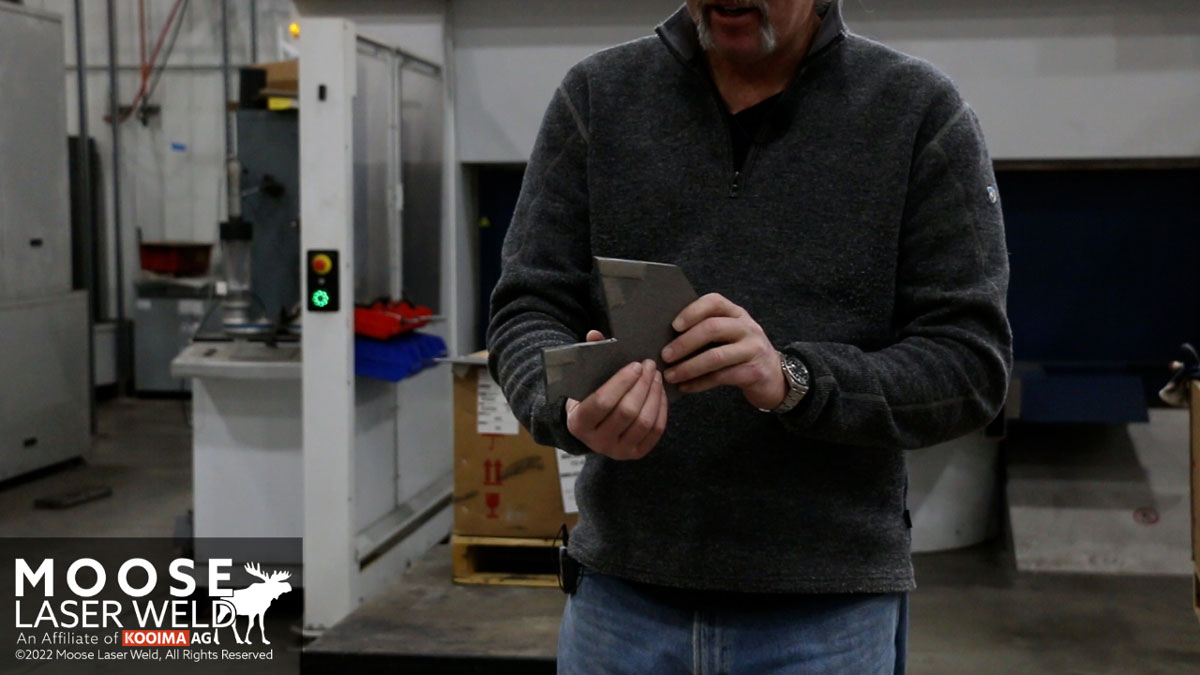Laser Cladding Services
Laser Cladding, also known as laser hardfacing, laser metal deposition, direct metal deposition (DMD), and direct energy deposition (DED), is a wear-prevention coating on a part or surface that extends the useful life of that part. This method bonds dissimilar materials together using a high-intensity laser beam. Adding a layer of one metal on top of the other has been shown to improve mechanical strength and resistance to wear and stress cracking. It may also extend a product’s service lifespan.
Some operating environments involve wear, stress, corrosion, and other factors capable of causing equipment to perform poorly or, worse, fail prematurely. Ensure your parts can stand up to these conditions with laser cladding services from Moose Laser Weld.
Laser Hardfacing Services
The high energy of a laser is used in laser hardfacing manufacturing techniques to attach a high performance alloy to a metal substrate that is normally of lower grade. The laser cladding layer is specifically designed to guard against circumstances that could lead to failure, such as corrosion, wear, high temperature fatigue, and others. To provide greater resistance against abrasive wear, extra hard particles are incorporated into the layer during laser hardfacing.
Whether you’re working to bring energy resources to the surface, construct invaluable infrastructure projects, or something else, encountering environments that inflict corrosion, stress, and wear on equipment is bound to happen. Our Koyma Klad laser cladding services are up to the task and perfect for steel and stainless steel materials.
The protective coating won’t gall or spall off in the field. The metallurgical bond between the Koyma Klad surface and the component is ultra-strong.
Laser Metal Deposition
The abbreviation LMD for "laser metal deposition" is commonly used in international contexts. Laser metal deposition is also known as "Laser Cladding", "Direct Metal Deposition" (DMD), and "Direct Energy Deposition" (DED).
Though sometimes confused with laser welding, the two are not the same, and each process is very different. Laser metal deposition is not the process of joining two metals together using heat, but depositing a protective coating on the surface of a metal substrate. LMD is therefore commonly used to repair and protect a variety of metal parts to improve their performance and durability.
Laser Cladding & Metal Deposition Advantages
Sometimes called laser remanufacturing, the process works by leveraging the laser to create a molten pool of a dissimilar material on the workpiece’s surface. The coating forms a protective cladding layer. Unlike traditional cladding methods, no contact or force is involved.
There are many benefits to laser cladding services. Examples include:
- Low Laser Exposure Time
- Low Laser Depth
- Metallurgically Bonds The Top Layer Of Material To The Base Material
- Superior Performance To Other Coatings
- Produces High Surface Quality
- Exhibits Low Warpage
- Often No, Or Minimal, Post-Processing Is Required
Unlike other material deposition methods, laser cladding produces an even molten pool. This results in fine-grained, pore-free, and crack-free protective layers. As a result, post-processing is eliminated or significantly reduced.
Laser Cladding Applications
Moose Laser Weld is an experienced provider of quick-turnaround laser-cladded parts for demanding applications. Twenty years ago, we pioneered the use of laser cladding. We’re proud to have developed Koyma Klad, a proprietary process shown to boost service life by 200 percent.
Enhanced capabilities and extensive experience make Moose Laser Weld the trusted supplier of laser-cladded components for many applications. Examples include:
- Forage Harvester Knives
- Disc Blades
- Straw Chopper Blades
- Cardboard Knives
- Oilfield Components
- Underground Boring Equipment
- Dirt Moving Equipment
Laser Cladding Company
Our special expertise is Laser Cladding a tungsten carbide matrix onto a high carbon steel blank for a superior wear life.
If you desire surface coatings but aren’t sure which is best, Moose Laser Weld is here to help. Our experts work with you to understand the application, operating environment, and your goals.
From there, a specific Koyma Klad coating is recommended for your project. We’re happy to tailor coatings to your needs, and our in-house metallurgist can provide micrographs for your records upon request.
Contact us to learn more about our laser cladding services.
Fast - Laser cladding replaces the traditional methods of hard facing. Examples of hard facing are: plasma, flames spray, d-gun, and wire weld.
Clean - Laser cladding produces a uniform, clean finished product.
Material -Laser cladding services work well on steel and stainless steel components.
Strength - Laser cladding will not gall or spall off in the field. The metallurgical bond between the Koyma Klad surface and the component is ultra-strong.
Quality - After completion, our in-house metallurgist meticulously inspects each project, and all orders are audited for accuracy before shipment. Our in-house metallurgist will also provide you with micrographs of your coating for your records.
Request a quote today! Send us a DXF or PDF of your project for a quick review. Email Thad at thaddj@KooimaAg.com or Phil at philk@KooimaAg.com or call 833-456-6462.








